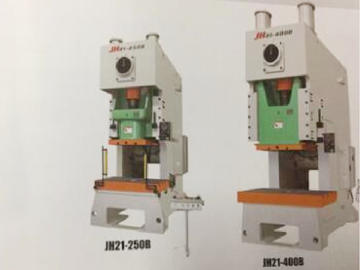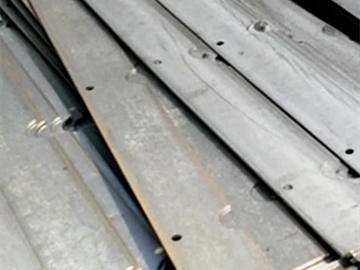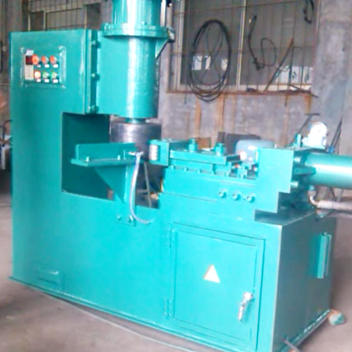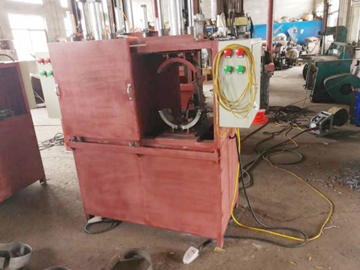Introduction
The production of Liquefied Petroleum Gas (LPG) cylinders plays a crucial role in the energy sector, catering to the needs of millions of households and industries worldwide. While the entire manufacturing process is essential, the production line for LPG cylinder bottom rings deserves special attention. This article explores the significance, key components, and optimization techniques employed in the LPG cylinder bottom ring production line.
Understanding the LPG Cylinder Bottom Ring
The LPG cylinder bottom ring is a critical component that supports the entire structure of the cylinder, providing stability and strength. It is typically made of steel and undergoes a series of processes before becoming a part of the complete cylinder. These processes include cutting, bending, welding, heat treatment, and quality checks.
Interested in Buying LPG Cylinder Making Machine from Longterm?
Key Components of the Production Line
- Cutting Machines: The production line begins with cutting machines that precisely cut steel sheets into the required dimensions for bottom rings. Modern automated cutting machines ensure accuracy and efficiency, reducing waste and saving time.
- Bending Machines: After cutting, the steel sheets are fed into bending machines that shape them into circular forms. Advanced computer-controlled bending machines offer high precision and consistency, ensuring uniformity across bottom rings.
- Welding Stations: Once the steel sheets are bent, they move to the welding stations. These stations employ various welding techniques, such as MIG (Metal Inert Gas) or TIG (Tungsten Inert Gas), to join the edges of the steel sheets and form a complete ring. Skilled welders and robotic welding systems ensure strong and flawless welds.
- Heat Treatment: Heat treatment is a critical step to enhance the strength and durability of the bottom rings. The rings are heated to a specific temperature and then cooled gradually, eliminating internal stresses and increasing their mechanical properties.
- Quality Control: Throughout the production line, quality control measures are implemented to ensure the final product meets rigorous standards. Inspections, measurements, and tests are conducted to verify dimensional accuracy, welding quality, and structural integrity.
Steel coil decoiler and straightening and 315Ton hydraulic presser

200T mechanical punching machine

The punching machine will be used for punching the hole and cutting off the bottom base sheet with mould

Vertical base rolling machine

Vertical base rolling machine is used for rolling round the bottom base sheet

Double welding position welding fixture

Double welding position welding fixture is used for welding the bottom base after rolling Two pieces can be welded at the same time

Bottom base mechanical forming machine

Bottom base mechanical puching machine will be used for forming the bottom base with mould

Optimization Techniques
To enhance efficiency and productivity in the LPG cylinder bottom ring production line, manufacturers employ several optimization techniques. These include:
- Automation: Automation technologies such as robotics and computer-controlled machinery reduce human error, improve accuracy, and increase production speed. Automated systems can handle repetitive tasks with precision, freeing up human workers to focus on more complex operations.
- Data Analytics: Data analytics plays a crucial role in optimizing production processes. By analyzing data collected from various sensors and monitoring systems, manufacturers can identify bottlenecks, inefficiencies, and areas for improvement. This information enables them to make data-driven decisions and streamline operations.
- Lean Manufacturing: Applying lean manufacturing principles helps eliminate waste, reduce lead times, and improve overall efficiency. Techniques like value stream mapping, 5S methodology, and continuous improvement empower manufacturers to identify and eliminate non-value-added activities, resulting in a more streamlined and productive production line.
- Predictive Maintenance: Implementing predictive maintenance practices helps prevent unplanned equipment downtime. By leveraging advanced sensors and machine learning algorithms, manufacturers can predict and address maintenance issues before they result in costly disruptions. This proactive approach optimizes equipment uptime and maximizes production output.
Conclusion
The LPG cylinder bottom ring production line is a vital part of the overall manufacturing process. By leveraging advanced technologies, automation, data analytics, and optimization techniques, manufacturers can enhance the efficiency, accuracy, and productivity of this line. Streamlining operations ultimately ensures the production of high-quality LPG cylinders that meet safety standards and fulfill the energy needs of households and industries worldwide.
